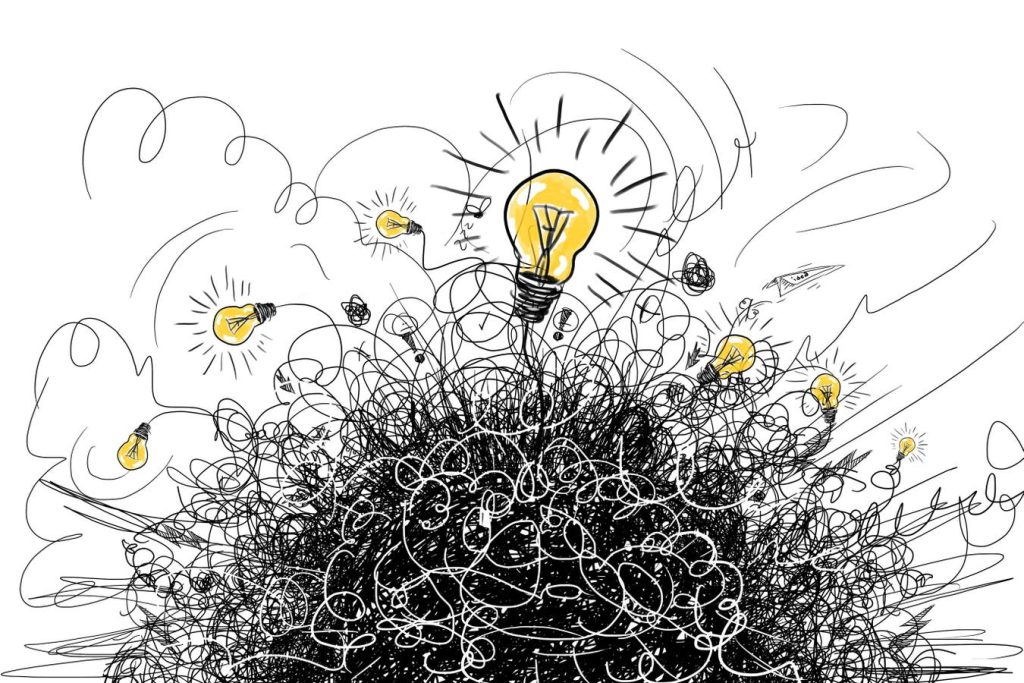The concept of ‘emergence’ in complex systems has been the subject of extensive study and is important in the natural and physical sciences and, increasingly, in engineering. There is a critical distinction between a ‘complex system’ compared to a merely ‘complicated system’ in this context.
Emergent effects of complex systems are, broadly speaking, phenomena present in the system that are not shared by and cannot be explained by an understanding or considerations of the system’s constituent components in isolation. This is often expressed as the ‘whole is more than the sum of its parts’.
For example, the murmurations of flocks of starlings, the coordination and formation of giant bait balls of fish, or the construction of ant megacities. And in our own brains, the ‘big’ mysteries: how does the mind emerge from the physical brain? What is self-awareness? And, even, what is consciousness?
How Physical Constraints Produce Emergent Effects
A detailed understanding of the physics and mathematics of how such emergent effects occur is still the subject of much intense scientific and philosophical research. There are no, as of yet, broadly accepted accepted mathematical models or frameworks that universally capture, describe, and predict emergence across physically distinct complex systems. Nonetheless, a lot of progress has been made. In some cases entire research institutes have devoted themselves to this subject. The fabled Santa Fe Institute in Santa Fe, New Mexico founded in 1984 in particular was set up to study complexity and emergence.
Despite this, there is an intuition behind it all that can be conceptualized. Everyday physical systems (i.e. non-quantum mechanical) are subject to the physical make up they are composed of. That make up necessarily introduces physical constraints to the system that ultimately impose different functional capabilities and limits.
In other words, ‘things’ are made of ‘stuff’, and what those things do, how they do them, and the limits of what they can accomplish are all the result of how the stuff they are made from interacts and operates.
At any arbitrary scale of physical organization, whether designed and engineered or naturally occurring, a physical object will do whatever it was designed to do or can do simply because it reflects the physics at that scale. And it will do so independent of whatever else other things around it are doing. Of course, it can interact with and be influenced by other similar things to itself or different things in its environment. Such interactions may, of course, affect how the thing under consideration behaves. But such interactions are nonetheless simply themselves other physical constraints, which typically includes the back and forth transfer of information.
Neurons in the Brain as an Example
This is all rather abstract, so consider a concrete example: the human brain. The make up of the brain spans many spatial scales of organization. From genes and molecules to cells to networks of cells to networks of brain regions. So let’s pick an intuitively recognizable scale at which we can distinguish an individual ‘thing’. A physically independent component at a particular scale of organization within the brain.
Consider individual neuron brain cells as the ‘thing’. As mentioned, there are many scales of organization and function below the scale of a neuron. These include genes, molecules, protein complexes and ‘molecular machines’ such as ion channels. A neuron is itself composed of computationally and functionally distinct and independent parts: its dendrites, the initial segment, the axon, and synaptic arborizations (we will not go into the details of each part here). There are also many scales of organization above a neuron. Neurons connect with each other to form local neural circuits, which combine to form structures such as cortical columns. Eventually distinct anatomical and functional brain regions connect up at the scale of the whole brain.
But viewed as a distinct individual ‘thing’, a neuron is made up of wet and squishy physical substrates organized in specific ways that support certain kinds of processes that functionally perform certain kinds computation. Of course, a neuron is interacting with, being influenced by, and influencing a myriad of other things, including other neurons. But an individual neuron does what a neuron does simply because at the end of the day it is physically built to be a neuron. It is not aware of its physical make up — it just physically is what it is. And it does not care what other things its interacting with are doing or how they are doing it. It just interacts because its physical make up allows it to.
However, even though a ‘thing’ or component of a system, such as a single neuron of the approximately 85 billion neurons in the brain, acts independently from all other things around it and is not aware of its own physical make up or what it is doing, it is necessarily contributing to the greater whole — to the system . How? By passing and contributing information to a scale of organization within the system that is one level up.
The critical concept here is that the information that a component passes along to the next level up results in a self initiated re-organization of the collective integration of all the information from all the participating components in such a way that it only makes sense and contextually exists at that higher level.
Put more succinctly, the output of those components essentially self re-organizes one level of organization up in the system up resulting in a new functional context for that information. Such self re-organization is not mysterious or magical, but rather is nothing more than the product of whatever the physical make up of the things that make up the components at that higher level of organization. Similar to the components that contribute information from the lower level, this higher level is subject to its own physical make up and constraints, and acts independent of anything else around it, not cognizant of where that information came from, how or why it was re-organized.
For example, the learning and information processing that a neural circuit can accomplish can only be defined and only makes sense when we consider the neural circuit as its own ‘thing’. It has no context if we just consider the firing patterns of the individual neurons that contribute to the circuit.
The information that results from the physical processes at one level seems to be passed on and re-organizes by following a path of ‘least resistance’ naturally resulting from the hierarchical constraints imposed by the physics that makes up the system (or collection of systems).
So given this physical intuition about emergence, how does the transfer and self re-organization of information across the physical and functional scales of the brain ultimately result in self-referential emergent properties such as self-awareness and consciousness? Well, despite everything that has been written on the subject, that really is still ‘magic’, at least for the foreseeable future.
Read the full article here









